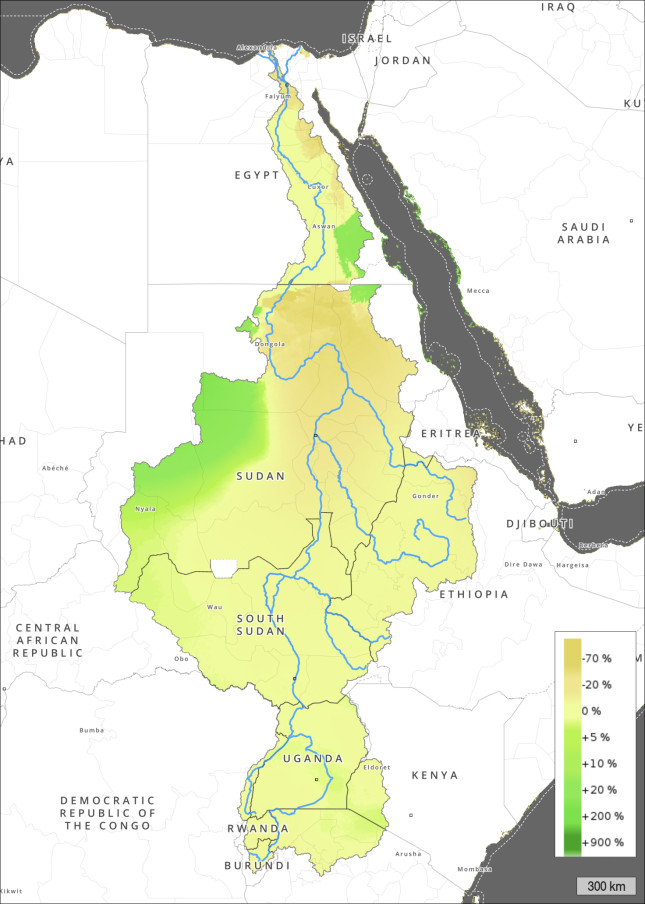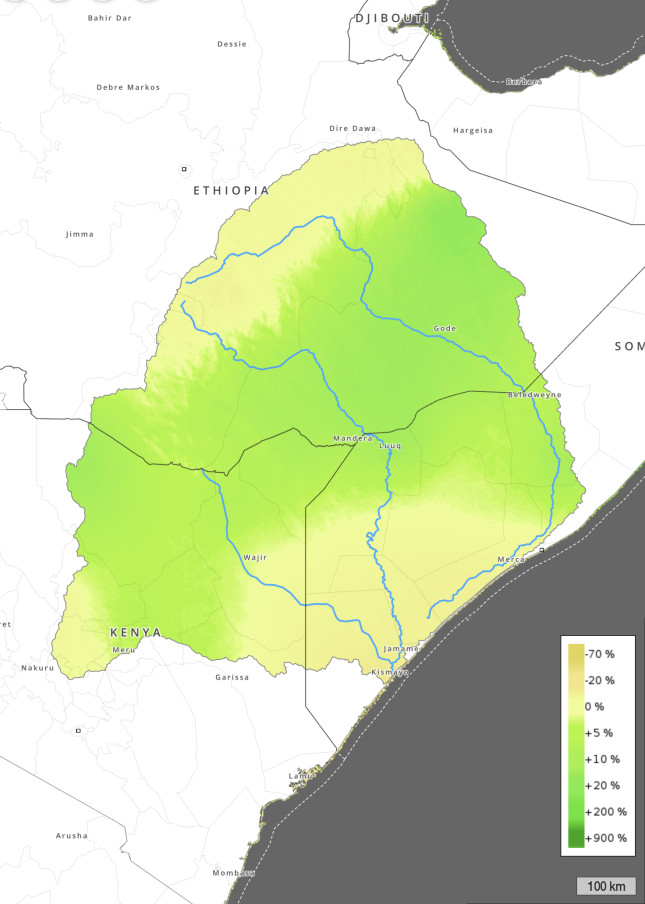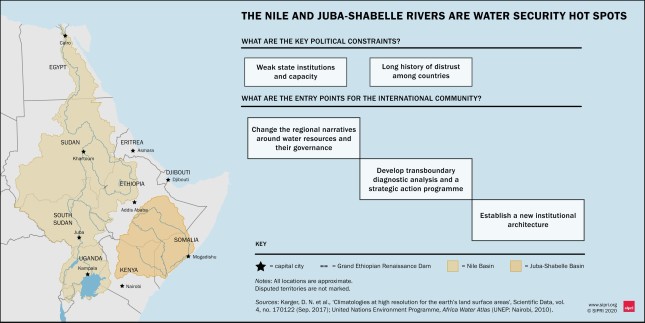-
Toward a New Regional Approach to Water Security and Governance in the Horn of Africa

As the global climate changes, climate-related security risks are making the existing political, social, and economic challenges even more complicated. The 230 million people who live in the Horn of Africa are highly vulnerable to the impacts of climate change such as droughts and floods. Political fragility and transnational complexities make water governance a matter of regional high-level politics as well as geopolitical tensions. In short, sustainable water governance is critical for achieving resilient peace.
In a new report published by Stockholm International Peace Research Institute, Jan Eliasson, former Deputy Secretary-General of the United Nations, stresses that in the Horn of Africa, although it is tempting to consider the management and development of water, agriculture, economy, and infrastructure as largely technical, this would “underestimate the highly political nature and strategic importance of these issues.” Acknowledging the complex political context, the report presents a regional analysis of environment, peace, and security linkages in the region with a focus on water security and governance.
Water Security Hotspots: The Nile and Juba-Shabelle rivers
The Nile and Juba–Shabelle basins are of core relevance for the Horn of Africa because of the interaction and confluence of several political, social, economic, and environmental processes. Tensions over transboundary water relations hold a potential for violent conflict. The key contentious issue in the Nile basin is the construction of the Grand Ethiopian Renaissance Dam (GERD) on the Blue Nile. Tensions around it have become part of the larger geopolitical playing field in the Horn. Another complex set of security challenges is concentrated along the Juba and Shabelle rivers between Ethiopia and Somalia. Despite the significance of water access, there has never been a bilateral agreement for international cooperation over the rivers’ usage. Yet climate change may pose further risks to security in both the Nile and Juba-Shabelle basins.
Projected Climate Changes
The two basins are projected to experience changes in precipitation and temperature. When researchers compared data for 1979–2013 and projected data for 2041–2060, their average precipitation anomaly map of the Nile Basin shows that precipitation is predicted to increase (green) in certain areas but decrease (yellow) in others (See Map 1). For the Juba-Shabelle Basin, the precipitation anomaly map shows the precipitation is projected to increase in a broad band while some other areas will see stable or slightly reduced precipitation (See Map 2). Both basins are projected to see temperatures increase by 1º to 2ºC. Due to its interaction with socioeconomic and political factors, the projected changes will have a significant negative impact on water access and subsequent multidimensional security in the Horn.
Map 1: Nile Basin Annual Mean Difference Precipitation Projection, 1973–2013 vs. 2041–2060

Map 2: Juba-Shabelle Basin Annual Mean Difference Precipitation Projection, 1973–2013 vs. 2041–2060

Political constraints
Weak state institutions and distrust between states in the region are two key political constraints in the Horn of Africa. These constraints have a negative effect on regional organizations, institutions, and initiatives. They also limit the options for sustainable governance of water resources and for anticipating and pre-empting other climate-related security risks in the region. National agendas and ambitions prevent countries from acknowledging shared regional interests.
A regional approach to water security and governance should be a priority, given the importance of transboundary water resources like the Nile and Juba-Shabelle basins to countries next to rivers. However, the solutions cannot be merely technical (See Figure 1). Experience elsewhere shows the importance of finding a way to address the political bottlenecks so that technically viable solutions can be implemented.
Figure 1: Water Security Hot Spots

Rethinking What’s Possible
Given these constraints and blockages, the international community can take three steps:
Change the narrative. Regional narratives around water resources and their governance must shift—moving from a narrative of competition and tension to one of shared problems and shared solutions. For this, we must identify a trusted leader and mediator who can shape the narrative around water, energy, and land, and raise this narrative to the highest political levels. It will be crucial to enable states to develop a joint vision for the region that stresses opportunities and implements cooperative solutions for the Horn of Africa.
Develop transboundary diagnostic analysis and a strategic action program. We need more solid, shared, and jointly accepted information. Reliable data can guide policies, help decision makers deal with the current challenges, and help them better anticipate climate impacts and climate-related security risks. Transboundary diagnostic analysis can be used to develop a strategic action program that supports actors in identifying clear priorities, identifying reforms, and resolving problems.
Establish a new institutional architecture. We must consider the establishment of a new institutional architecture to manage water resources in the region, despite the many existing institutions in the region. Currently, no suitable organization or framework can address the regional water management and security challenges in the Horn of Africa. A critical reassessment of the objectives and structures of existing institutional frameworks and agreements is needed, including active learning from other regions and basins in Africa.
The need for an effective framework of water governance in the Horn of Africa is undeniable. To achieve one will require political leadership, strategic vision and hard-headed analysis together with new institutional arrangements.
Anniek Barnhoorn is a Research Assistant with the Climate Change and Risk Programme at Stockholm International Peace Research Institute (SIPRI).
Dr Florian Krampe is a Senior Researcher in SIPRI’s Climate Change and Risk Programme.
Luc van de Goor is Director of Studies, Conflict, Peace and Security at SIPRI.
Elizabeth Smith is a Research Assistant with SIPRI’s Climate Change and Risk Programme.
Dan Smith is the Director of SIPRI.
Sources: Scientific Data, Stockholm International Peace Research Institute.
Photo credit: A woman in Somalia washes clothes with scarce water, March 24, 2017. USAID.
 A Publication of the Stimson Center.
A Publication of the Stimson Center.









